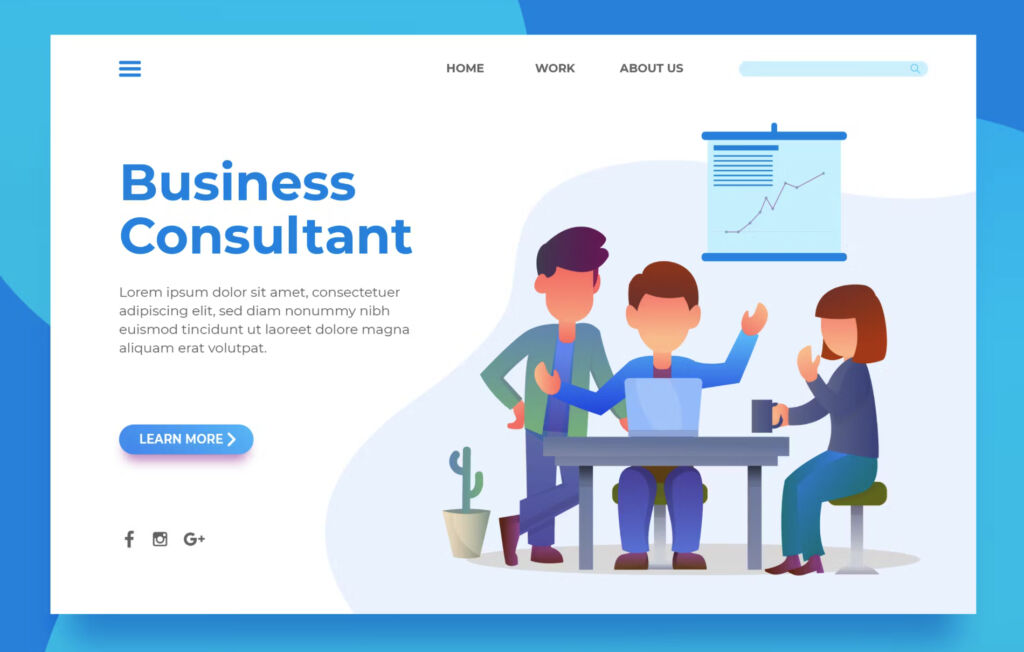Conversion optimization is the process of increasing the percentage of website visitors that convert into customers. When it comes to increasing conversions, landing page design plays a crucial role. A well-designed landing page can direct your visitors along the path to purchase and inspire them to take action.
Depending on its purpose, it can serve as an introduction to your brand, a platform for presenting your product or service, or a portal for collecting valuable customer data. Understanding your landing page’s purpose is the stepping stone towards tailoring its design to better fulfill its objective and, ultimately, increase your conversions.
Let’s dive into some proven design tips that will help you optimize your landing page for higher conversions.
Understanding the Purpose of Your Landing Page
Before embarking on the design process, it’s essential to understand the purpose of your landing page. Is it to gather email sign-ups? To sell a product? To promote an event? Having a clear goal from the start will guide your design decisions and help you create a more effective landing page.
In the realm of digital marketing, your landing page is a powerful tool, tailored to serve a specific purpose. Its objectives could range from building brand awareness, driving sales, fostering customer engagement, or promoting lead generation. Determining this purpose early on shapes its design, content, and call-to-action.
In essence, each design decision should be guided by this purpose, providing a seamless, targeted experience for your visitors. A deep understanding of your landing page’s role within your digital marketing strategy is instrumental in optimizing its effectiveness and boosting conversions.
 Clear and Concise Headlines For Conversion Optimization
Clear and Concise Headlines For Conversion Optimization
The headline is typically the first thing visitors see when they land on your page. It should be clear, concise, and compelling enough to grab their attention.
Make sure your headline communicates the unique value proposition of your offer in a succinct and persuasive manner.
Your headline serves as the entry point to your landing page. It’s not merely a collection of words; it’s a potent summary of your brand’s message.
A confusing or overly complicated headline might cause visitors to lose interest or misinterpret your offering, thereby negatively affecting conversion rates. On the other hand, a headline that is clear, succinct, and engaging not only captures your audience’s attention but also sets the right expectations about your page’s offer.
It’s vital to craft a headline that strikes a chord with your audience, sparks interest, and effectively highlights your unique value proposition, nudging visitors further along the path to conversion.
Use Relevant and High-Quality Images
Images can make or break your landing page. High-quality, relevant images can help visitors visualize what you offer and can increase conversion rates. Ensure your images are high resolution, and consider using images that show your product or service in use.
Images are not merely decorative elements; they are powerful tools that can communicate your value proposition faster than words. People are inherently visual creatures and tend to process and remember images more effectively than text. By using high-resolution, relevant images, you can deliver your message efficiently and build a stronger connection with your audience.
Showcasing your product or service in action can provide context and enhance the visitor’s understanding of its utility.
Furthermore, quality images can boost the overall aesthetic appeal of your landing page, making it more engaging and inviting, thereby potentially increasing the time a visitor spends on the page and enhancing conversion opportunities.

Simplify Your Call to Action (CTA)
Your CTA is arguably the most important element of your landing page. It needs to be clear, visible, and compelling. Use concise, action-oriented language (“Download Now,” “Sign Up,” etc.) and consider using a contrasting color to make your CTA stand out. In the pursuit of conversion optimization, your Call to Action (CTA) plays an instrumental role. It’s the ‘nudge’ that pushes your visitors to complete a desired action.
However, an overly complicated CTA can be a hindrance. Therefore, it’s advisable to keep your CTA simple. It should give a clear indication of what the visitor should do next and what they will receive in return. Remember a confused mind doesn’t buy.
Coupling this with a vibrant, contrasting color can make your CTA pop and command attention, significantly improving the likelihood of visitor engagement and subsequently boosting conversion rates.
Minimize Form Fields
If your landing page includes a form, keep it as short as possible. Each additional field can reduce the likelihood of someone completing the form. Only ask for the information you absolutely need. Remember, a user’s time and patience are precious. Long and complex forms can deter visitors, causing potential leads to abandon the page.
Keep it concise and relevant. This can significantly improve user experience, lead to higher completion rates, and ultimately contribute to more successful conversions.

Include Social Proof
Social proof such as testimonials, customer logos, or case studies can significantly increase trust and credibility. It helps visitors feel more comfortable about doing business with you. Ensure these are genuine and relatable to your target audience.
At Rapport Innovative Marketing, we believe social proof is a potent asset. Genuine testimonials, recognizable customer logos, and impactful case studies can foster a sense of trust and authenticity in your brand.
These elements serve as endorsements from satisfied customers, building rapport and establishing credibility. Pun intended!
They not only make visitors feel more at ease in engaging with you but also create a relatable narrative that resonates with your target audience. Implementing social proof in your landing page design strategy can enhance its effectiveness and catalyze the conversion process.
 Design for Mobile
Design for Mobile
More people are using their mobile devices to browse the internet than ever before.
Therefore, your landing page needs to be designed with mobile users in mind. It should look great and function perfectly on all screen sizes.
As part of your web design strategy, mobile optimization is a vital consideration. It’s no longer just about having a desktop-friendly landing page.
Given the ubiquitous nature of mobile device usage, a mobile-responsive landing page is a necessity.
Effective web design ensures your page not only looks good but also provides seamless functionality across all devices.
This includes easy navigation, fast load times, and clear, easy-to-read content. By prioritizing mobile design, you cater to a broader audience, enhance user experience, and create more opportunities for conversion.
A/B Testing
Last, but not least, remember to test your landing page design. A/B testing can help you determine which design elements work best for your audience.
This testing method involves creating two different versions of your landing page (A and B) and comparing their performance based on user engagement and conversion rates.
Experiment with different headlines, images, CTAs, etc., and use the data to continuously improve your design.
Not only does this help identify which specific elements resonate more with your audience, but it also provides valuable insights that can shape future design decisions.
Remember, ongoing refinement is the key to maintaining a high-performing landing page.
Final Thoughts
Designing an effective landing page is more than just making it look good. It’s about creating a user experience that guides visitors toward your intended conversion goal.By applying these design tips, you’ll be well on your way to a higher-converting landing page.
